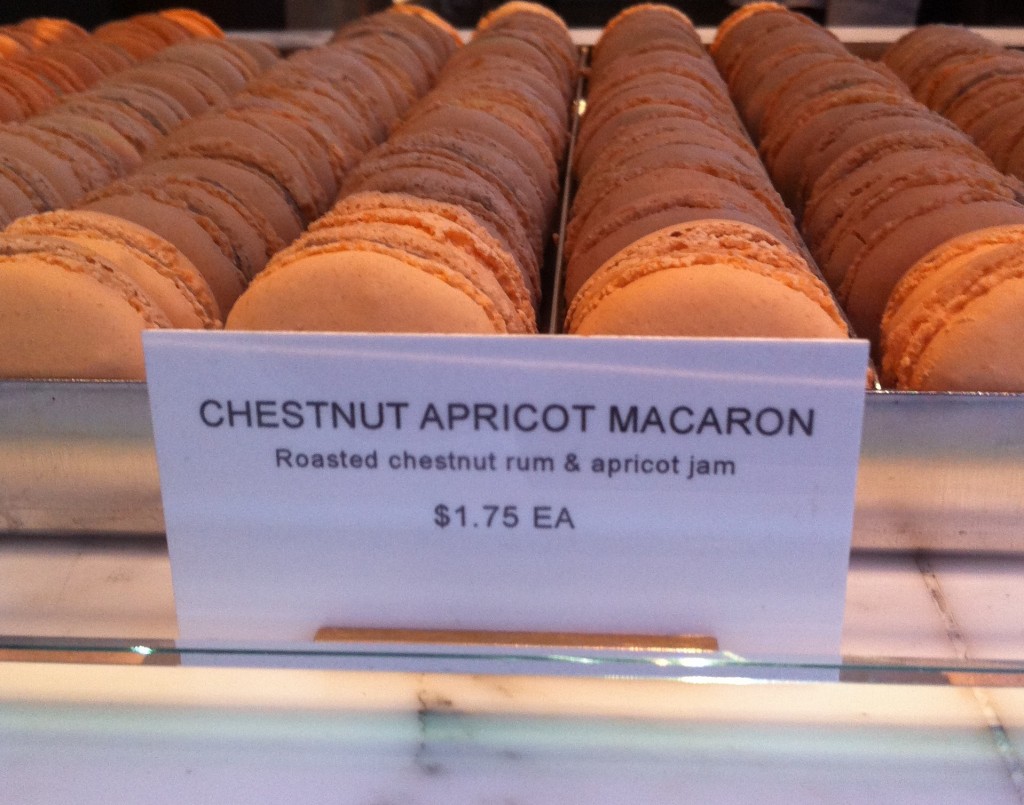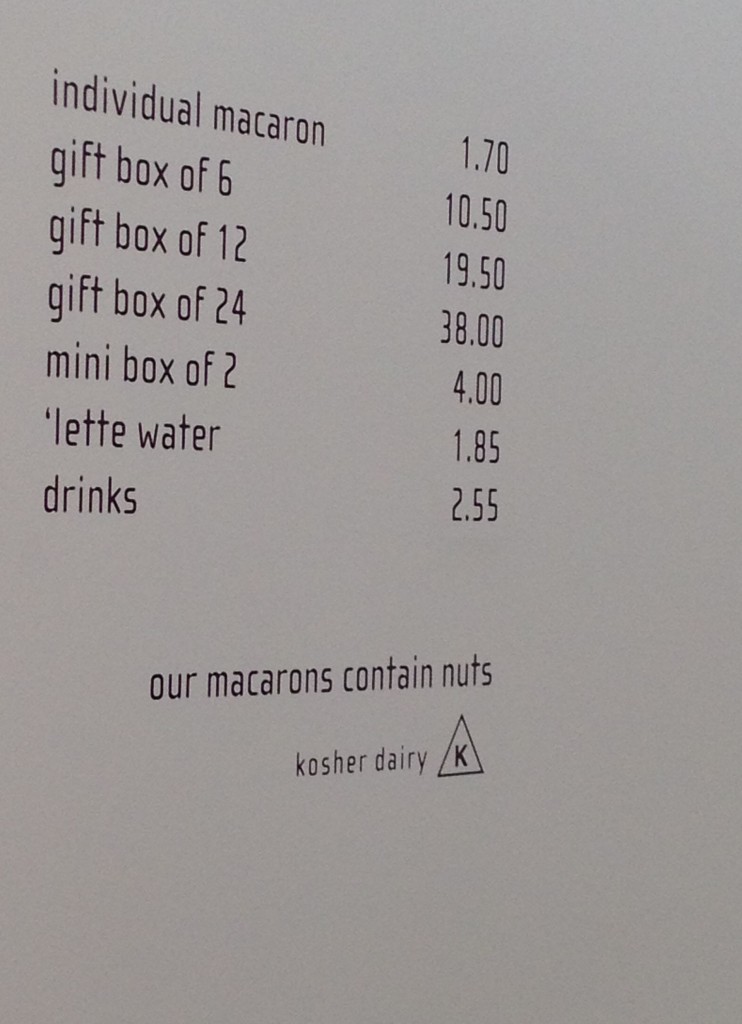Math of Macarons
A few weeks ago, I was downtown with the missus when we stumbled upon the Bottega Louie Restaurant and Gourmet Market. The window display was enticing, so we went inside and discovered, among other things, a bakery. This one's focus was the macaron, one of many sweets aiming to topple the cupcake as the trendiest dessert, and so for a town obsessed with the current trends, it is no surprise that Los Angeles is home to several similarly specialized patisseries.
Though smaller than the average cupcake, the macaron is also more labor-intensive, and is therefore frequently on the more expensive end of the confectionery spectrum. The macarons at Bottega Louie, for example, will run you $1.75 each.

One of many delightful flavors.
If you need a sweet fix, though, a single macaron may not be enough. Anticipating such a first-world problem, Bottega Louie also offers boxes of macarons for purchase. The boxes come in three sizes: the small holds five macarons, the medium holds thirteen, and for the true Francophiles, the largest box holds forty five. If you buy a box, you can fill it with whatever flavors you like, and can then eat to your heart stomach's content.
What does any of this have to do with mathematics? As with so many things, a quantitative eye is useful when it comes time to look at the bottom line. While the prices of most things decrease with scale - each donut in the purchase of a dozen is cheaper than the purchase of an individual donut, for example - in the case of these macarons, such scaling does not occur.
Let's dig into some numbers. The small box of macarons costs $10, or $2 per macaron. This is more than a 10% increase in the price per macaroon; essentially, one is paying an extra $1.25 for a fancy little box.
Things are slightly better if you go bigger. The medium box is $25, as compared to $22.75 for thirteen individual macarons. That comes out to roughly $1.93 per macaroon, or a cost of $2.25 for the large box. The largest box will run you $80, as compared to $78.75 for forty five individual macarons. Equivalently, the cost is around $1.78 per macaron, and the additional cost of the box once again comes to $1.25.
In particular, it seems a little strange that the smallest and largest boxes both incur an additional $1.25 charge, while the one in the middle is an extra $2.25. The mathematician in me would much rather see the box in the middle priced at $24, and the consumer in me would rather see all the boxes be cheaper per macaron than buying them individually.
Unfortunately, in the macaron game, this type of pricing is apparently not unheard of. There is another small chain of macaron shops known as 'lette, with several locations throughout the Los Angeles area. I stopped in one this weekend and found the following prices displayed on the wall:

It's not all bad news this time around. While the smaller boxes cost more per macaron than buying individually ($2 each for the mini box, $1.75 for the box of six), the larger boxes are thankfully cheaper (around $1.63 each for the box of 12, around $1.58 for the box of 24).
In either case, though, the moral is the same: when it comes to macarons, make sure you do the math. While we are all accustomed to the idea that larger purchases correspond to lower costs per unit, these examples show this is not necessarily the case. If you're only interested in stuffing your face, make sure to take a moment to crunch the numbers, as the best deal may not immediately present itself to you.
Psst ... did you know I have a brand new website full of interactive stories? You can check it out here!


